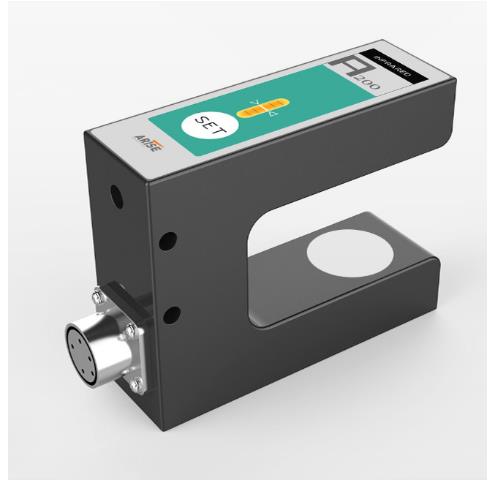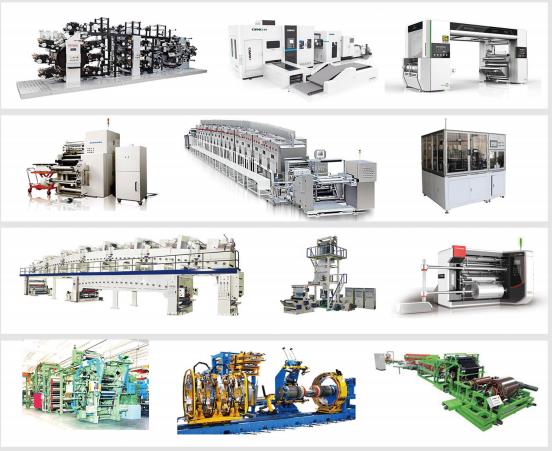The Integration of Vision Systems in Web Guiding: Enhancing Precision
Traditional web guiding systems frequently rely on mechanical sensors or human adjustments, which may not provide the accuracy and flexibility necessary in current production operations. The incorporation of vision systems with web guiding system is a significant improvement, providing improved precision, real-time monitoring, and adaptive control capabilities. This article delves into the intergration of vision systems in web guide, exploring how vision systems are tranforming web guiding processes and their impact on various industries.

The Role of Vision Systems in Web Guiding
Vision systems, which include cameras and image processing algorithms, can gather and analyze visual information in real time. Vision systems can provide exact input to guiding mechanisms by continuously monitoring the location and alignment of web content, allowing for dynamic adjustments to maintain proper alignment. Unlike mechanical sensors, which may be limited in their detection capabilities or prone to wear and tear, vision systems offer greater flexibility and accuracy, making them ideal for applications where precise alignment is critical.

Key Benefits of Vision Systems Integrating in Web Guiding Processes
1. Precision
Vision systems provide high-resolution imaging and advanced algorithms that allow for accurate material alignment identification and analysis. Vision-guided systems ensure optimal alignment by precisely tracking the location and orientation of the web material. This lowers the likelihood of misalignment-related faults and improves the quality of the final output.
2. Real-time Monitoring
Real-time tracking of the position and movement of the web content is continuously monitored by vision systems. This makes it possible to identify deviations or abnormalities right away and take quick corrective action to keep everything in sync. Real-time monitoring lowers material waste and minimizes the chance of manufacturing errors.
3. Adaptive Control
Vision systems enable adaptive control of guiding mechanisms based on real-time feedback from the imaging system. By dynamically adjusting guiding parameters such as speed, angle, or tension, web guide systems can respond to changes in material properties, production conditions, or environmental factors, ensuring consistent alignment and optimal performance.
4. Versatility
Vision systems can be configured to accommodate various types of web materials, including paper, film, textiles, and composites. They are adaptable to different production processes and can be integrated into existing machinery or production lines with minimal modifications. This versatility makes vision-guided web guiding systems suitable for a wide range of applications across diverse industries.
5. Reduced Downtime
By providing early detection of alignment issues or defects, vision systems help minimize downtime associated with manual inspection or troubleshooting. Prompt identification of problems allows for timely interventions and preventive maintenance, reducing the risk of costly production stoppages and equipment damage.
6. Data Insights
Vision systems capture valuable data on material alignment trends, performance metrics, and production parameters. This data can be used for process optimization, quality control, and predictive maintenance purposes. Insights gained from vision system data analytics enable continuous improvement of web guiding processes and overall production efficiency.
7. Improved Safety
Vision-guided web guiding systems reduce the need for manual intervention in the alignment process, minimizing the risk of accidents or injuries associated with manual handling of materials or machinery. By automating the guiding process, vision systems contribute to a safer working environment for operators and maintenance personnel.

Applications Across Industries of Integrating Vision Systems in Web Guiding Processes
| Industry | Application |
| Printing | Print registration controlColor alignmentDetecting misprints and defects |
| Packaging | Aligning packaging materialsEnsuring accurate cutting and sealingDetecting label misalignment |
| Textiles | Aligning fabrics during weaving or printingEnsuring consistent tensionDetecting fabric defects |
| Converting | Aligning materials during slitting or laminatingEnsuring precise cutting and finishingDetecting wrinkles or creases |
| Automotive | Aligning materials for upholstery or interior componentsEnsuring accurate cutting and stitchingDetecting defects in automotive trim |
| Electronics | Aligning flexible circuit boards or film componentsEnsuring accurate placement of electronic componentsDetecting defects in display panels |
| Food | Aligning packaging materials for food packagingEnsuring accurate sealing and labelingDetecting contaminants or foreign objects |
| Pharmaceutical | Aligning packaging materials for pharmaceutical productsEnsuring accurate labeling and serializationDetecting defects in blister packs or vials |

Future Trends and Innovations of Vision Systems Integrating in Web Guiding Processes
1. Enhanced Artificial Intelligence (AI) Integration
Advanced AI and machine learning techniques will be included into future vision systems for web directing to further improve their capabilities. In order to maximize web alignment, artificial intelligence (AI) systems will evaluate enormous volumes of visual data in real-time, picking up on patterns and making predictions. With the ability to independently modify guiding parameters in response to changing production conditions, these systems will be able to increase precision and effectiveness.
2. Multi-Spectral Imaging
Multi-spectral imaging technologies will improve material characterisation and identification when they are integrated into vision systems. By capturing images across multiple wavelengths, these systems can differentiate between various materials, textures, and surface properties with greater accuracy. Multi-spectral imaging will enhance defect detection capabilities and enable more precise web alignment, particularly in applications where different materials are used.
3. 3D Vision and Depth Sensing
Future vision systems will incorporate 3D vision and depth sensing technologies to provide spatial information about the web material. By accurately measuring the distance between the camera and the web surface, these systems can detect wrinkles, bulges, or other irregularities that may not be visible in 2D images. 3D vision and depth sensing will enhance defect detection accuracy and enable more robust web guiding in complex production environments.
4. Edge Computing and Real-Time Processing
Vision systems will increasingly leverage edge computing and real-time processing capabilities to perform image analysis and decision-making directly at the point of capture. By processing data locally, these systems can reduce latency, bandwidth requirements, and dependency on centralized processing units. Edge computing will enable faster response times, allowing vision-guided web guiding systems to adapt quickly to changes in material position or environmental conditions.
5. Integration with Robotics and Automation
Vision systems will be integrated with robotic arms and automated guiding mechanisms to enable autonomous web guiding in dynamic production environments. Robotic vision-guided systems will use visual feedback to accurately manipulate guiding mechanisms and maintain precise alignment of the web material throughout the production process. This integration will improve efficiency, reduce manual intervention, and enhance overall system productivity.
6. Augmented Reality (AR) Interfaces
Augmented reality (AR) interfaces will be included into future vision systems to give operators user-friendly, interactive tools for tracking and managing web guiding procedures. With AR overlays, operators will be able to see guiding parameters in real-time by superimposing guiding trajectories, alignment indications, and diagnostic data onto live video streams. AR interfaces will improve user interaction with vision-guided web directing systems, expedite troubleshooting, and increase operator situational awareness.
7. Sustainability and Energy Efficiency
Vision systems for web guiding will integrate eco-friendly materials, energy-saving components, and resource-efficient design concepts, with a focus on sustainability and energy efficiency. These devices will cut down on energy use, lessen their negative effects on the environment, and encourage environmentally friendly production methods. Vision-guided web guidance systems will also help reduce waste in production processes and encourage the use of recyclable materials.
Conclusion
The integration of vision systems in web guiding represents a significant advancement in precision manufacturing. Across various industries, vision-guided web guiding systems are revolutionizing production processes, enabling manufacturers to achieve higher quality, efficiency, and competitiveness.


